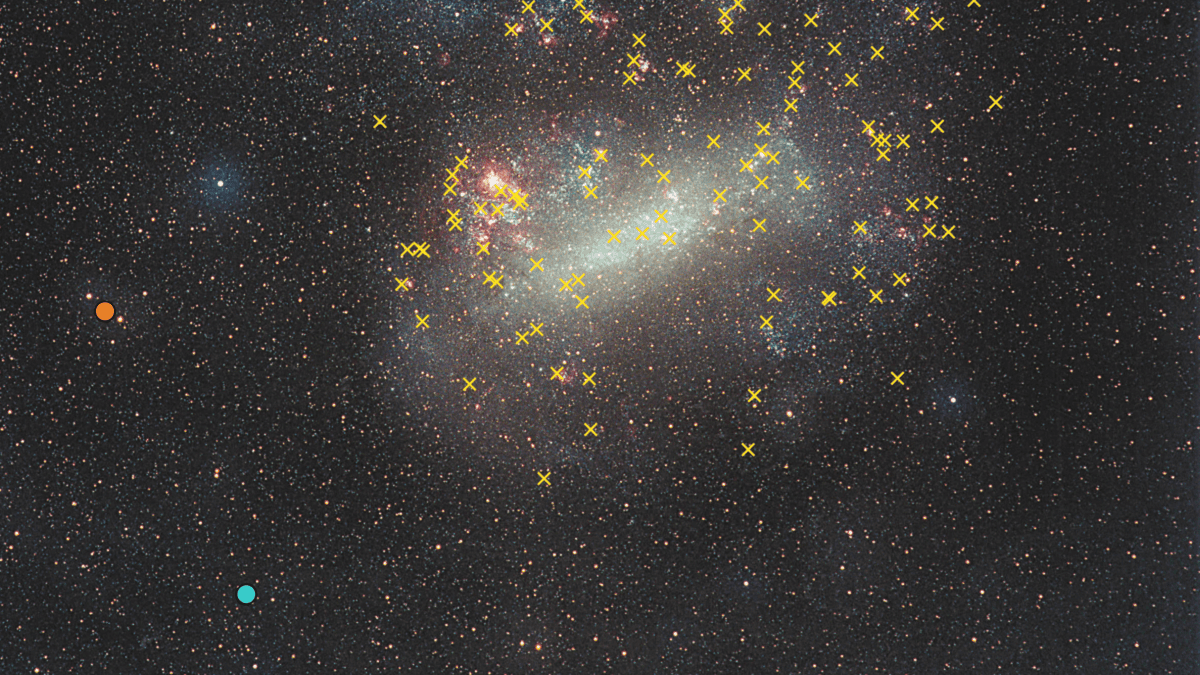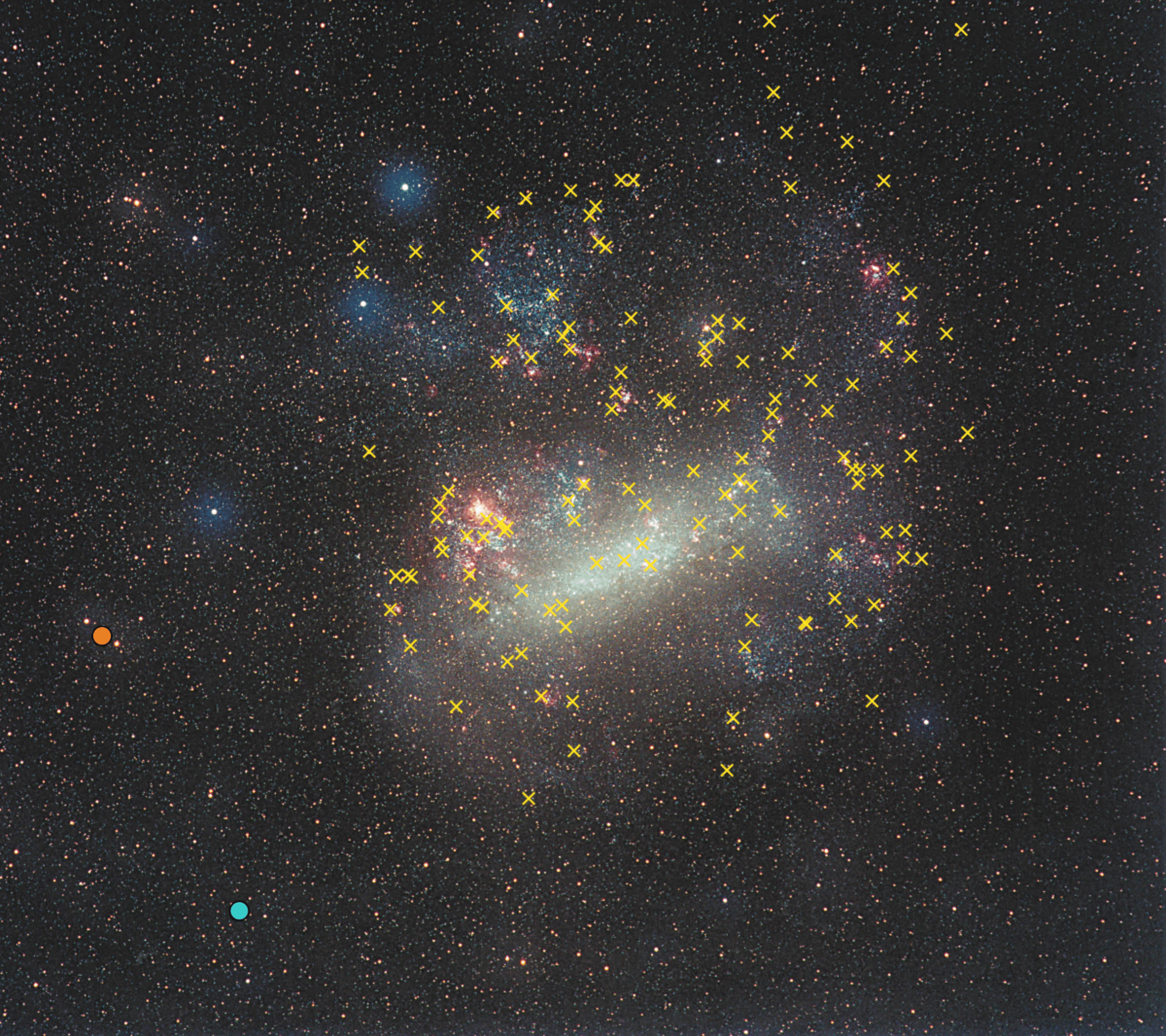
When researchers directed the European Space Agency’s X-ray observatory, XMM-Newton, towards two enigmatic lights on the border of the Large Magellanic Cloud, they stumbled upon an astonishing finding: the discovery of two unknown supernova remnants.
“A supernova occurs when a star explodes at the end of its life, generating a powerful shock wave and creating an interstellar object known as a supernova remnant,” stated an international team of scientists in a research paper detailing the discovery.
“Supernovas play a vital role in the cosmic matter cycle and the birth of new star generations,” they continued, “as the shock waves produce supernova remnants that heat and ionize the surrounding stellar and interstellar mediums, compressing and accumulating matter while enriching their environment with various chemical elements.”
In a newly released visible-light image from ESA, the remnants present themselves as two distinct circles in the lower-left section: J0624-6948 (orange, situated higher) and J0614-7251 (blue, positioned lower). The yellow crosses denote previously recognized supernova remnants.

The Large Magellanic Cloud is a dwarf galaxy located close enough to the Milky Way to be visible with the naked eye from the Southern Hemisphere on Earth. Alongside the Small Magellanic Cloud, it ranks among the Milky Way‘s most significant satellite galaxies and remains one of the few actively star-forming galaxies.
For a supernova to leave behind its remnant, the dying star must be encircled by ionized gases — conditions that are typically observed in dense star-forming regions rather than in the outer segments of a galaxy. Ionized gas is common in active star-formation zones, where intense radiation from young, hot stars strips electrons from surrounding atoms.
This makes the positions of J0624-6948 and J0614-7251 particularly surprising. However, analyses comparing these findings with known supernova remnants and theoretical models reveal that their brightness and dimensions align with other identified supernova remnants within the Large Magellanic Cloud.
“The discovery that these two sources of light are, in fact, supernova remnants, situated far from previously identified sources of stellar explosions, is indeed surprising,” noted ESA researchers in a press release.
This finding suggests that the Large Magellanic Cloud may host a greater concentration of ionized gas than previously understood.
The research team anticipates that interactions between the Large Magellanic Cloud, the Milky Way, and the Small Magellanic Cloud could be influencing the distribution of this gas. As these galaxies interact gravitationally, they may compress, pull, or even ionize gas in unforeseen ways, making the outskirts of the Large Magellanic Cloud more dynamic and turbulent than previously believed, which could reshape our understanding of its structure and potential for star formation.
The identification of supernova remnants at the fringe of the Large Magellanic Cloud confirms that stellar explosions can occur outside a galaxy‘s core. This new insight allows scientists to explore the shock waves, expelled stellar materials, and surrounding environments of such events in unprecedented detail.
“These two supernova remnants enhance our comprehension of the dynamics within our galaxy’s neighborhood,” the team concluded.









